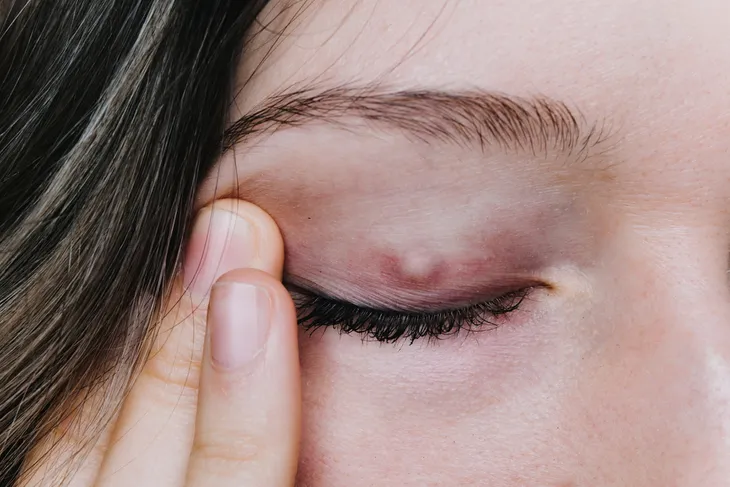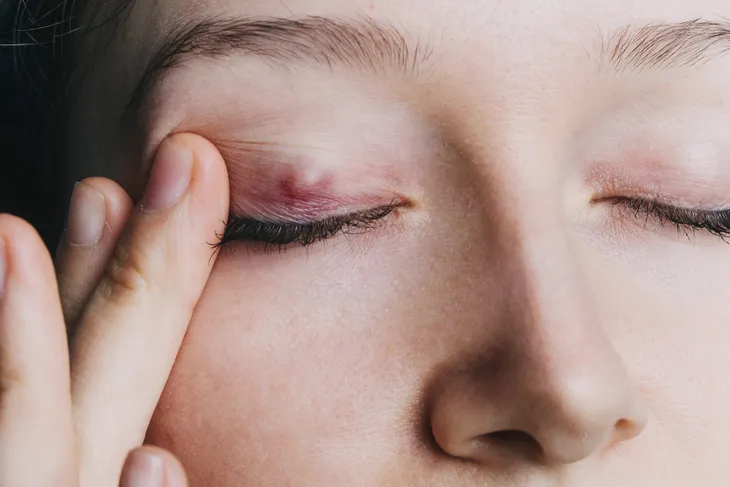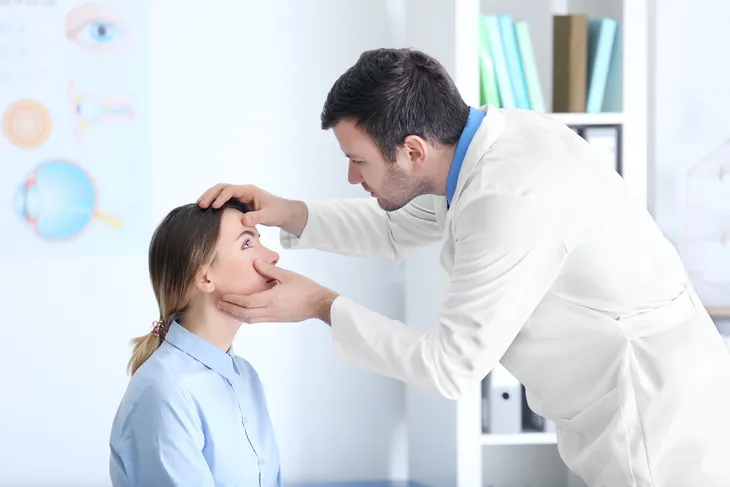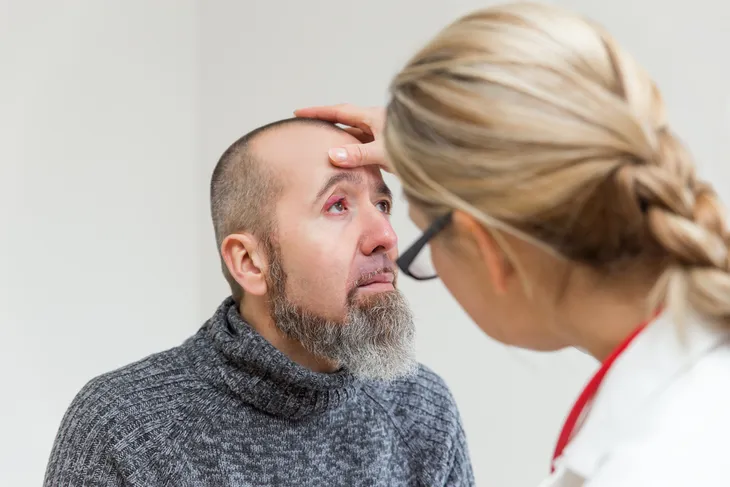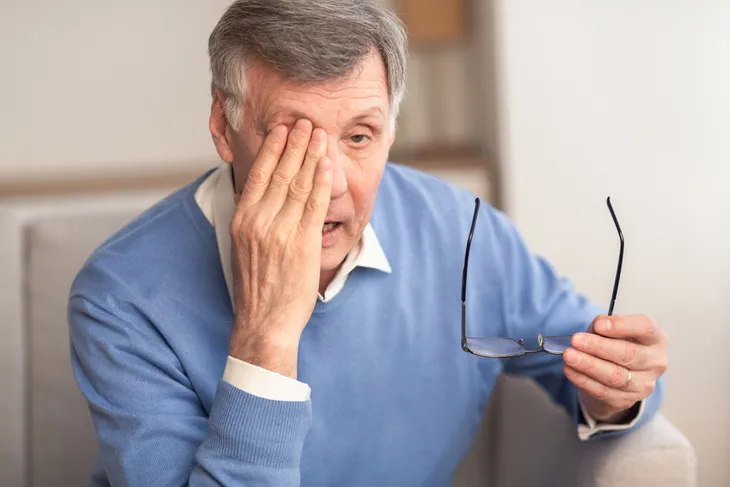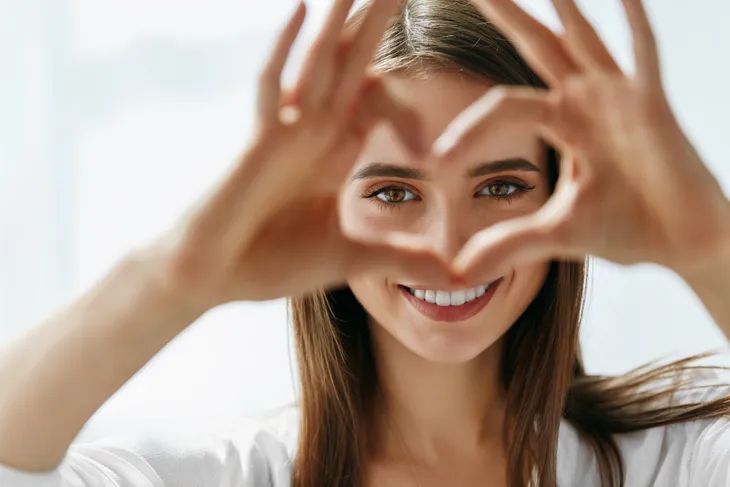There’s a good chance that, at some point in your life, you’ve had the displeasure of suffering from styes and chalazia. These inflamed lumps of skin can be found along the edge of an eyelid and emerging here they can cause soreness, dry eye, and general irritability.
The good news is that most styes and chalazia will go away with a little time. The bad news is that, in the meantime, they can present some annoying obstacles to one’s day-to-day activities. Few people will feel completely comfortable standing before a class or meeting of their colleagues with a giant red sore covering part of their eye. In any case, because styes and chalazia tend to affect all of us at one point or another, it’s a good idea to know a little bit about these strange afflictions.
What Are They?
Technically a stye is an infection that takes hold on the eyelid, often along the lower edge of the eyelid. When the infection is located in one of the oil glands inside the eyelid it is called an internal hordeolum. A chalazion, meanwhile, is a lump that emerges within — rather than along — the eyelid. They’re less likely than styes to present the patient with pain, though they can also be significantly larger, meaning they may look worse than a stye.
Styes and chalazion can also be linked to a condition called blepharitis, which involves a visible inflammation of the eyelid and is often caused by the clogging of pores by oil produced by the skin. Blepharitis can look and feel like acne.
Causes
At their core, styes are bacterial infections that often take root in the base of an eyelash or the follicle. It doesn’t take much for this part of the body to become infected: simply touching a surface containing bacteria and then rubbing your hands and fingers over the eye can result in a stye emerging.
A chalazion is less likely to be caused by a bacterial infection; instead, this much larger (though often less painful) lump in the eyelid is caused by the blockage of oil glands. If the glands that produce oil a top or underneath the eyelid become blocked, a chalazion can result. Although the sizes of styes and chalazions vary, both look similar to a pimple.
Symptoms
The emergence of red and potentially sore bumps somewhere on or within the eyelid is the best indication that a stye or chalazion has emerged as a result of a bacterial infection or the clogging of oil glands.
As time goes on, the stye may begin to grow in size, the pain may intensify, and it could affect the way the eye works — for example, the eye may begin to water or it could feel dry. If the stye or chalazion are particularly large, they could even affect vision in the affected eye or eyes.
First Steps
The emergence of painful sores along the eyelid can raise concerns in the afflicted individual and those close to them, such as a parent or spouse. The appearance of styes and chalazia can be quite striking and may leave the patient feeling hesitant to leave the comfort and isolation of the home. It may also lead them to speak with their doctor about pursuing some kind of treatment.
But while speaking with a physician about the issue can help, often the only treatment for styes and chalazia is patience. That’s because a stye or chalazia will often present problems for only a few days before they become so swollen they crack and drain out in a mostly harmless fashion. Often, patients won’t even notice a change other than the decline of swelling and a return to normal appearance.
Treatment
Treatment for a stye may actually involve nothing more than waiting for the sore to drain, at which point it should begin to shrink and eventually return the skin to its normal state. Although often painful and irritating, a stye rarely lasts more than a week, so doctors often decide against prescribing medication.
A chalazion can present a different scenario, however, because it tends to emerge within the eyelid and takes longer to reach its full size, which is usually larger than a stye. A chalazion is also more likely to affect an individual’s vision, even though it’s less likely to cause pain. To treat a chalazion, doctors will often decide against prescribing medication, instead recommending the patient regularly clean the eye using a clean cloth and warm water. This can help keep the chalazion clean and encourage healing. That said, a chalazion can take weeks or even months to completely heal. Should it be determined that more intensive treatment is necessary, a doctor may recommend the patient try ointments, solutions or medicated pads designed to help clean the eye and spur healing of the infection. Should a stye or chalazion continue to grow despite these measures, a physician may
“recommend an injection of steroid medication or surgery to remove it,” says the University of Michigan Health.
Bad Ideas
The emergence of an irritating sore on the eyelid that strongly resembles a pimple may prompt many people to take matters into their own hands. This could mean trying to “pop” the stye or chalazion by squeezing it or using a heated pin to lance and drain the disturbance.
These are bad ideas. For one, styes and chalazions aren’t actually pimples and may not respond to pressure in the same way as acne on the surface of the face. Additionally, lancing may be dangerous, as it could lead to penetration of the eyeball. It may also result in the opening of a sore on or around the chalazia or stye, which can become infected and may only intensify the pain and discomfort.
Prevention
It’s tough to completely guard against styes or chalazia. Even individuals who rigorously wash and maintain the eye areas can find themselves dealing with this problem at some point in their lives. Sometimes people are more likely to suffer from styes and chalazia because their skin produces more oil, increasing the chances that the eyelid oil glands become clogged and problematic.
That said, there are a few simple steps you can take to limit your chances of developing styes or chalazia. First, avoid touching your eyes too frequently, particularly when you’re in a public place where germs can spread fast. Avoid rubbing your eyes too frequently. Second, wear safety glasses when performing chores where your eyes might be exposed to foreign objects, such as grass clippings or dust. Finally, if styes and chalazia seem to be frequent problems for you, be sure to regularly wipe down your eyelids with a cleaning solution or even just warm water and clean cloth.

